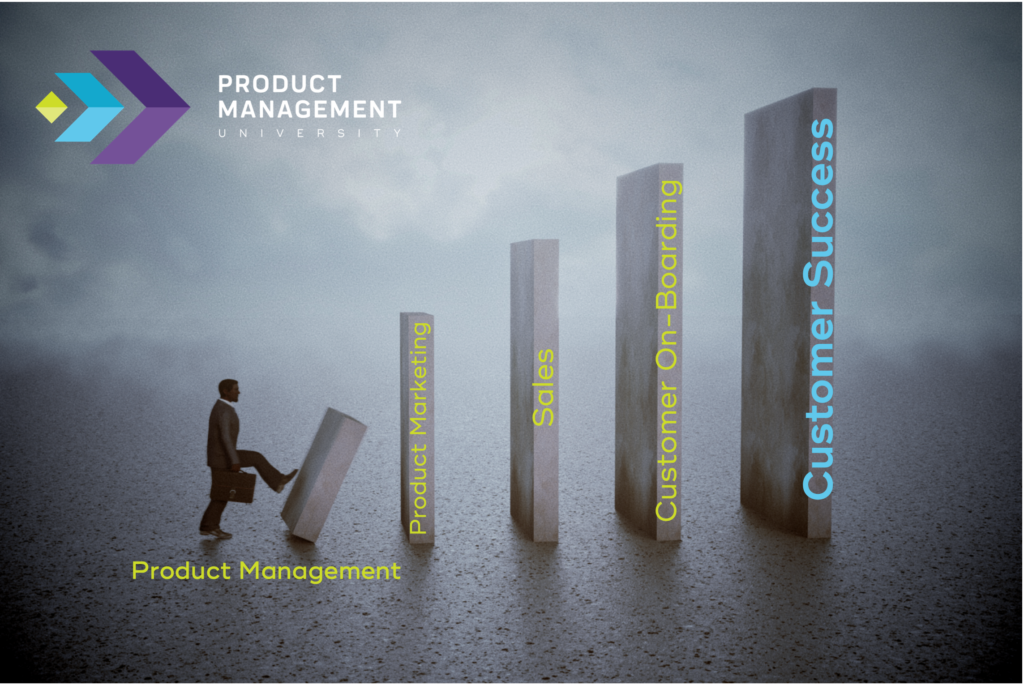How to Set Customer Success Managers Up To Play Offense

In most B2B organizations, it’s more the exception than the rule that customer success managers inherit accounts where they’re in a position to play offense because the customer is thrilled with your products.
Let’s dream for just a minute.
It Starts With Product Management
Product management consistently does discovery at a level that makes them more knowledgeable holistically on the markets and customers than all other disciplines.
With strong top-down discovery as the foundation, product managers collaborate and build products that make users better at their jobs in ways that have measurable strategic value to the customer (and to your own organization).
Product marketing receives all the WHO, WHAT & WHY content from product management to create and communicate value messages that fill the sales funnel with influencers and buyers that have a need worthy of engaging with you.
Sales has a differentiating story, products and solutions to back it up, and brings home one win after another, and they’re customers that fit nicely into your sweet spot (80/20 rule) where your odds of success are high.
Customer onboarding teams know exactly which job tasks are most critical to the customer and help them configure the solution accordingly with metrics for quantifying success. Economic buyers are thrilled with the partnership they’ve formed with your organization.
The Buck Stops With Customer Success Managers
Customer success takes the reins from the onboarding team and other than some minor issues or to-do’s, they’re in a position to help customers realize even more value from their partnership with your organization.
Customers agree to regular strategic account planning meetings where they share their top priorities, why they’re critical and the hurdles standing in their way.
Customer success managers identify opportunities for further adoption of existing products and opportunities for add-on modules/products.
Since customers are receiving value they can quantify, they’re on board with your strategic account plan, and budget accordingly for the additional adoption and/or modules.
Customers are happy (and loyal). You’re growing the revenue of the account and annual renewals are more of a formality than an uphill struggle.
Your organization is hitting its revenue numbers on both new and existing accounts, customer adoption is up, and so is customer retention.
Here’s the $1 million question: Why does this have to be a dream?
Answer: It doesn’t.
That’s the beauty of a portfolio management approach that begins in product management. It’s a “strategic customer value first” approach to aligning all products and customer-facing disciplines to the top-down priorities of your target customers so that everyone is doing their part to eliminate the obstacles standing in the way of those customer outcomes.
When you make the business outcomes of your target customers everyone’s top priority, by default, they’ll return the favor to your organization.
Click here if you want to experience the easiest way to learn product management, portfolio management, product marketing, pre-sales demos and customer success with our unique hands-on learning format. Be sure to check out our Product Management Framework that simplifies everything by making customer outcomes the starting point for building, marketing, selling and delivering strategic value.
Becoming More Strategic
- Portfolio Management 9 of 10 – The Best Product Launches Launch the Story, Not the Product
- Portfolio Management 8 of 10 – The One Thing That Simplifies Sales Enablement Most
- Portfolio Management 7 of 10 – Portfolio Positioning Is What Makes Your Product Positioning More Strategic
- Portfolio Management 6 of 10 – A Product Roadmap Isn’t Just a Product Thing
- Portfolio Management 5 of 10 – Integrating Business Processes vs. Products
- Portfolio Management 4 of 10 – Market Strategy vs. Product Strategies
- Portfolio Management 3 of 10 – Portfolio Vision
- Portfolio Management 2 of 10 – Bridging the Gap on Customer Discovery
- Portfolio Management 1 of 10 – Forecasting Revenue
Subscribe to The Product Vibe or follow Product Management University on LinkedIn to make sure you get the 10-part post.
by John Mansour on October 23, 2023.